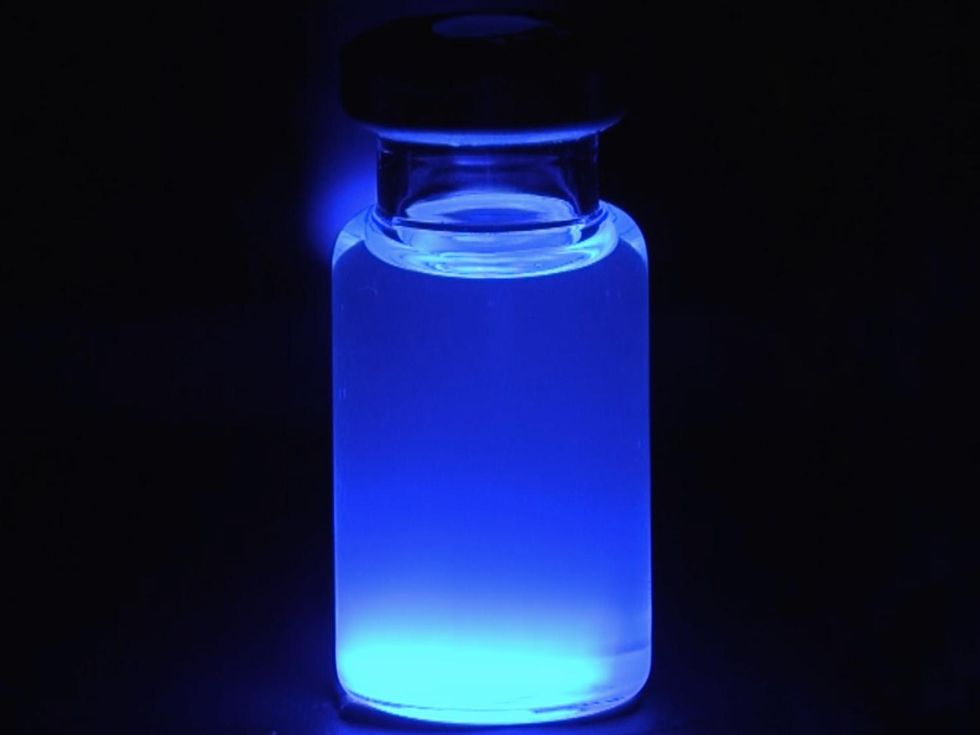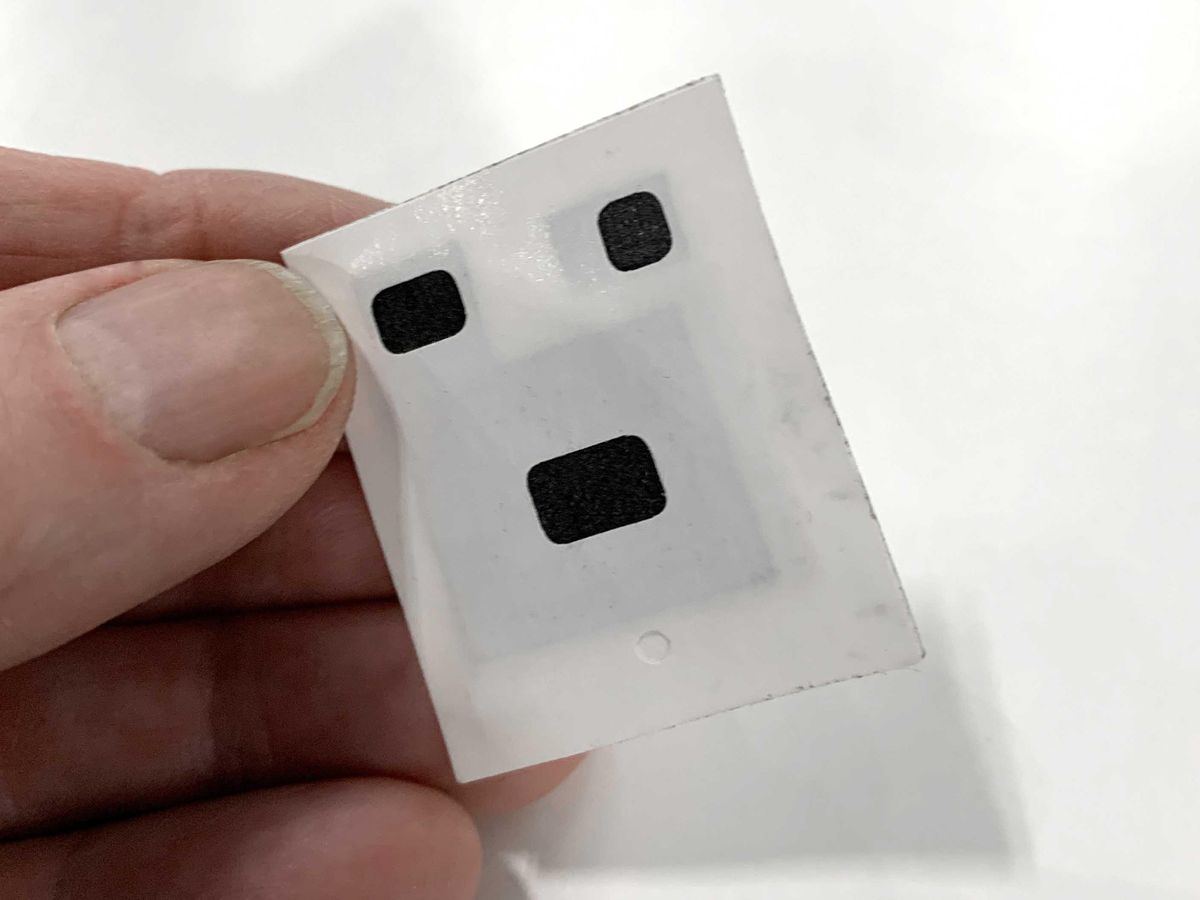CES, the huge annual conference, showcase, and deal-making venue for the international consumer electronics industry, is not just about shiny new gadgets. It’s also about what’s under the hood—or at least what researchers and developers hope will be inside a whole host of devices some day.
Here, in no particular order, are four such enabling technologies I spotted at CES 2023. It may be a year—or two, or never—before they show up in products, but all are worth watching.
Nanosys’s eyesafe blue quantum dots

Adding these blue quantum dots to the traditional red and green arrays used in TV and computer displays will reduce the potential for eye damage
Nanosys
Nanosys, the manufacturer of quantum-dot films used in television displays from several major manufacturers, is aiming to dial down viewers’ exposure to blue light without sacrificing picture quality, by adding a blue quantum dot to its current red-and-green quantum-dot array.
Briefly, in the now-ubiquitous QLED technology, quantum dots are used to improve color quality by tuning light to precise wavelengths. These LCD-based displays typically use an array of blue LEDs as a backlight along with a quantum-dot film that converts some of that light into the red and green frequencies used to make up an RGB (red-green-blue) image, passing the blue light through unchanged.
But there is growing concern that constant exposure to blue light, due to hours of screen time every day, can cause problems over time, contributing to macular degeneration, cataracts, and other eye problems. In the shorter term, it can disrupt sleep.
Solutions to date have involved physical filters for displays, coatings for glasses, and software settings that allow changes to the white point (which makes images look a little yellow).
Nanosys says adding a blue quantum dot to the current red and green array won’t cost much (less than 10 percent more) and can reduce the harm caused by blue light without sacrificing colors or contrast. Its zinc selenide QD absorbs blue light from what is believed to be the most harmful range of wavelengths—425 to 445 nanometers—and reemits it in the 460-to-480-nm range.
The company unveiled its blue-shifting quantum dots at CES last week and says it will be ready to manufacture them in quantity before the end of the year. If and when such technology shows up on retail shelves is up to TV manufacturers.
BeFC’s paper batteries
BeFC, a spinout of the French National Center for Scientific Research (CNRS), is ready to ramp up production of paper batteries for use in sensors and other IoT devices. The company says these biofuel-based cells, which combine stored glucose with oxygen extracted from the air to generate electricity, can produce energy equivalent to a coin-cell battery. The company said that 10 to 12 products that use BeFC’s technology are in development by a variety of manufacturers. Several of those products—including a temperature and humidity tracker and a smart bandage—are due to come to market soon.
Lumus’s reflective waveguide for smart glasses
The Lumus Z-Lens reflective waveguide technology is ready to enable smaller and lighter AR glasses, the company says. This isn’t Lumus’s first attempt to become the go-to supplier of optical technology for AR wearables, but the new architecture allows for a vastly smaller image projector. And the technology that goes into smart glasses is going to have to be as small and light as possible if these devices are ever to appeal to consumers.
Typical waveguides are diffractive, that is, they break incoming light into its red, green, and blue wavelengths, then redirect and reassemble it. Lumus instead uses an array of tiny mirrors to redirect images from a projector to the eye while allowing 90 percent of light coming in from the real world to get through. The company says its reflective technology is better, preserving brightness and keeping images more precisely aligned than its diffractive competitors. Lumus also indicated that its approach allows direct bonding to lenses, making prescription AR glasses easier to produce.
The basic technology has been used in military helmets for more than a decade, but the twist announced at CES is a change in the configuration of the waveguide to expand the image in two directions, not just one.
Lumus is ready to take this technology into mass production later this year and expects to see it available in consumer products in 2025.
Ixana’s through-the-body low-power communications technology
Ixana, a spinout of Purdue University, is looking for wearable device makers to adopt its through-the-body low-power communications technology. Associate Professor Shreyas Sen and his colleagues wrote about their then work in progress in the December 2020 issue of IEEE Spectrum. They called their invention Electro-Quasistatic Human Body Communication; they’ve now tagged the commercial version Wi-R, and Sen says it’s ready for prime time.
This extremely low-power (sub-hundred microwatt) technology uses the conductive properties of the body to create a broadband communications bus. It will be perfect for use with AR glasses, Sen says, easily transmitting video from a camera in lightweight glasses to a processor worn elsewhere without draining the wearable’s battery. The company has announced that an evaluation kit is available for preorder.
Tekla S. Perry is a former IEEE Spectrum editor. Based in Palo Alto, Calif., she's been covering the people, companies, and technology that make Silicon Valley a special place for more than 40 years. An IEEE member, she holds a bachelor's degree in journalism from Michigan State University.



